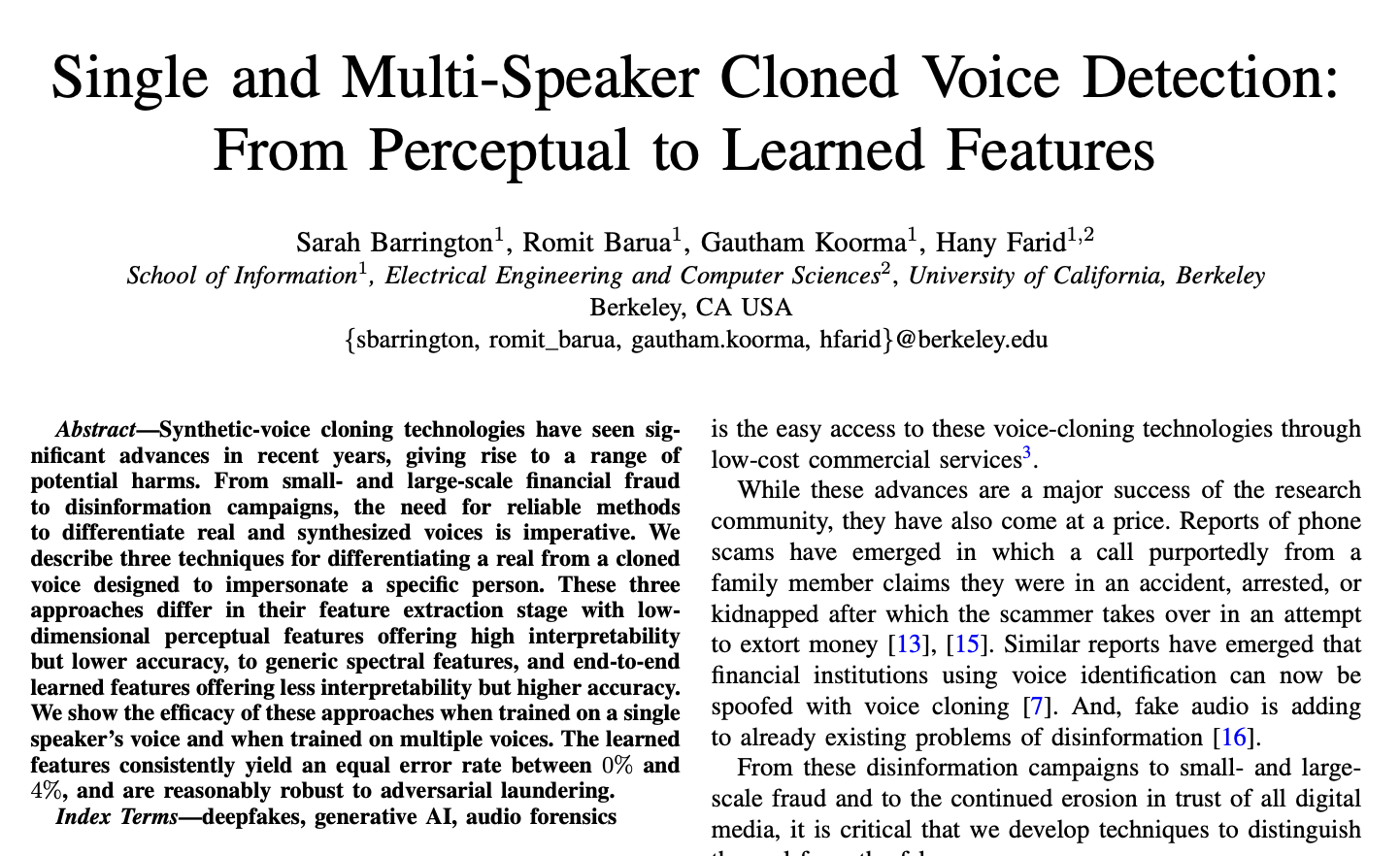Detecting Audio Deepfakes and AI Voice Cloning: From Perceptual to Learned Features
Synthetic-voice cloning technologies have seen significant advances in recent years, giving rise to a range of potential harms. From small- and large-scale financial fraud to disinformation campaigns, the need for reliable methods to differentiate real and synthesized voices is imperative. In this MIMS final project, now submitted to a leading forensics conference and published online as a pre-print, we describe three techniques for differentiating a real from a cloned voice designed to impersonate a specific person. These three approaches differ in their feature extraction stage with low dimensional perceptual features offering high interpretability but lower accuracy, to generic spectral features, and end-to-end learned features offering less interpretability but higher accuracy. We show the efficacy of these approaches when trained on a single speaker’s voice and when trained on multiple voices. The learned features consistently yield an equal error rate between 0% and 4%, and are reasonably robust to adversarial laundering.










